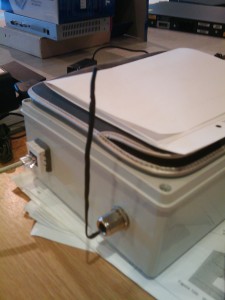In this article, it’s reported that Louis Vuitton – a fashion designer – has sued and won $32 million US from an ISP, Akanoc Solutions Inc, which hosted a customer who was selling forged Louis Vuitton products.
This has caused uproar in the ISP community as at first glance it appears as though the ISP in question is being held responsable for the acts of it’s customers, but really they are simply being held responsable for refusing to act against a customer who was involved in an illegal practice.
The court documents detail how Louis Vuitton notified the ISP no less than 15 times – giving them ample opportunity and evidence to terminate the customer. Instead the ISP allowed that customer to juggles his sites around on different domain names and IP addresses and continue to sell the fake goods. The ISP was found guilty because they were complacent in allowing a customer to use their service to break the law. They tried to claim safe harbour under the DMCA act, however here we are exactly 2 years after the initial filing and the websites listed in the initial claim are still operating in Akanoc IP space.
It’s a tricky line for ISPs to cross. In my day to day work, I receive notices of copyright infringement from the MPAA/RIAA every week – but how are we supposed to act? We do not have the technology to actively monitor accused customers as the equipment required ranges into the tens of thousands to the hundreds of thousands of dollars. The MPAA/RIAA provide scant evidence – evidence which has been shown in the past to be very, very incorrect at times. We do what we can under UK law, notify the customer that we have received an infringement notice and notify the MPAA/RIAA that the customer has been warned.
The UK government wants to make deep packet inspection boxes mandatory for all ISPs, without regard to the cost (which will cripple any medium-to-small service provider, if not put them out of business) and on top of that they appear to think that these boxes can log everything and anything regardless of software or encryption – there isn’t a DPI box yet which can monitor Second Life traffic… but that’s what the UK government is expecting ISPs to do.
However, this is missing a key point in this case in California: The ISP in question was provided with verifiable evidence that thier customer was selling fake, knockoff and illegal goods – and they declined to act on it (and in fact are still declining to act upon it to this day). Other ISPs spend a great deal of time and money ensuring that they are reacting to spam issues and hacked servers being used to host fake paypal logins. Akanoc Solutions Inc. took an active decision in deciding to not enforce their rights to terminate an obviously fraudulent customer and allowed them to continue in their business. They deserve everything they got.
